Waterlogging is an increasing problem for gardeners everywhere. Whether it’s the result of freak weather conditions or just generally wetter seasons, this is a problem many of us face. Here’s how to evaluate the severity of the problem in your garden, along with some worthwhile solutions to help you improve soil drainage.
Grass in need of a little TLC? Browse our full range of lawn care products to brighten it up.
What is waterlogging?
The most obvious indication that you have a problem with soil drainage is, of course, puddles of standing water on your lawn, beds, or borders. Plants may fail to thrive, or you may also notice plants wilting and showing yellowing on the leaves. If you dig them up and discover they have black, smelly roots – that’s rot. Bulbs and tubers may have completely rotted away. This is waterlogging at its very worst, but there are other more subtle signs – perhaps your garden just isn’t thriving the way it used to. If that’s the case, perform this simple test to see how well your soil is draining.
- Dig a small hole, about 15cm across and 30cm deep
- Use a watering can to fill the hole with water
- Leave the water to drain away until the hole is empty
- Refill the hole with water
- If it takes longer than 4 hours for this second filling to disappear, it’s likely you have a drainage issue
It may be that even though your soil isn’t sodden to the touch, it’s still too wet. This harms the quality – it stops worms from doing their job of processing organic matter into the soil and can leave the ground damp, compacted and infertile.
Sometimes, repeated downpours leach minerals deeper into the soil where they crystalise, forming an impenetrable layer. Known as panning, this locks the waterlogging into your soil’s structure. Luckily, there are solutions.
How to deal with occasional waterlogging
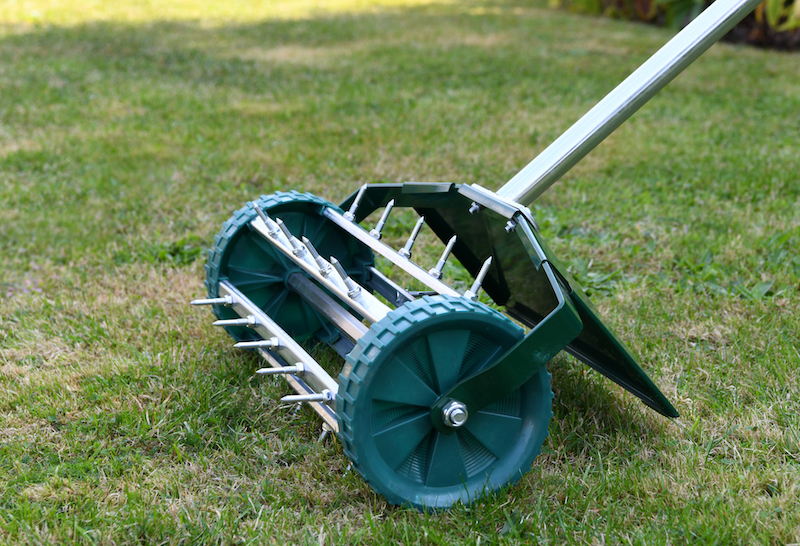
Image: Garden Gear Rolling Lawn Aerator from Suttons (© T&M)
If your ground is waterlogged, it’ll have a natural tendency to compact. In the short term, do your best to help water to drain away by using the tines of your garden fork to puncture the soil surface. For more long term problem areas, try to avoid making a bad situation worse. Do your best to stay off the worst affected areas but if you do have to access waterlogged ground on foot, consider laying temporary paths to spread the load.
How to treat a waterlogged lawn
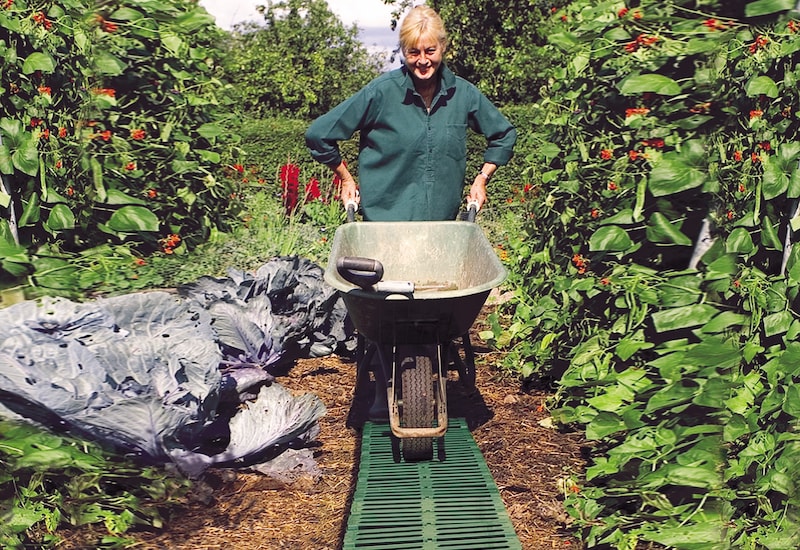
Image: Suttons
Moss loves a damp lawn so may have gone a little rampant and must be removed with a scarifier before you do anything else. Once you’ve done that, it’s time to break up and aerate the soil. The best tool for the job is a hollow-tine aerator, but failing that, your garden fork will do fine.
Once you’ve spiked the lawn to aerate the soil, add a top dressing of compost or lime-free sand. Then, once the weather has warmed up a little and the grass has started to grow you can reseed or over sow any sorry-looking bare patches. We recommend using Rapid Green Self-Repairing Lawn Seed.
How to deal with compacted soil
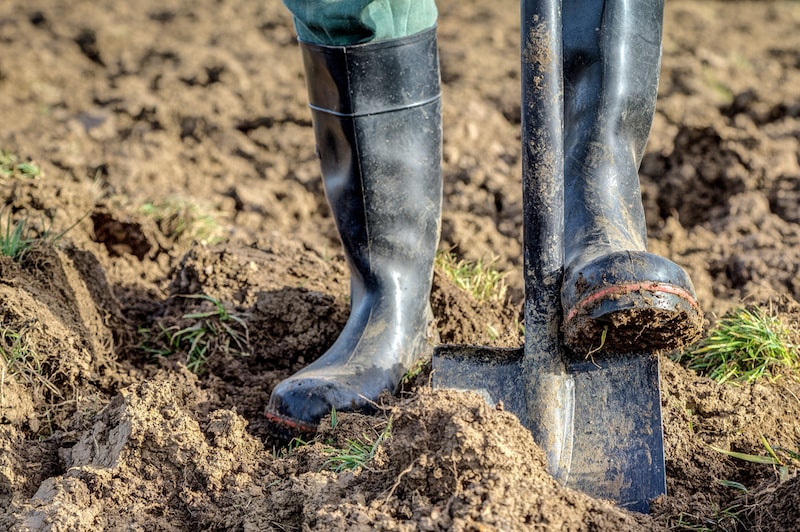
Image: Shutterstock
If your soil is sodden and compacted, you might need to dig below the hard pan of crystallised minerals to improve drainage. To find out where this is, you just need a spade and an empty biro tube (no ink required!)
The biro test:
- First dig a small hole of about a spade’s depth
- Take your biro tube and, starting just below the rim of the hole, push it into the side
- If the pen goes in fairly easily then all is well
- Keep going down the side of the hole
- When you reach a level where the biro won’t go in then you have found the pan, i.e. compacted soil which will restrict growth and drainage
- Break this up by digging the soil to just below this level
Once you’ve penetrated the hardened layer which stops water from draining freely, it’s important to stop the same problem recurring. To do this, you must work to improve the soil structure – how you approach the task very much depends on what kind of soil you’re gardening.
What soil type do I have?

Image: Shutterstock
Soils fall into three main categories – sandy, clay and loam. Sandy soils, as the name suggests, contain an abundance of sand. These soils drain rapidly, but also dry out very quickly and tend to be nutrient poor. At the other end of the spectrum, clay soils contain lots of sediment and hardly any sand. These soils are generally fertile but, because they don’t drain very well, are very prone to waterlogging. The ideal soil is loam – a well-balanced mixture of clay and sand which is free-draining and yet holds plenty of moisture and nutrients.
Of course there are lots of other soil types depending on your local climate and the underlying geology of the area, but to gain some understanding of the soil in your garden or allotment, here’s a simple squeeze test.
The squeeze test:
Take a handful of garden soil and add a little water so that it’s moist but not over-wet. Close your hand and give the soil a firm squeeze. Open your hand and assess the soil as follows:
- If it holds its shape but crumbles when you poke it, you have loam soil
- If it holds its shape, even when poked, you have clay soil
- If it collapses in a heap as soon as you open your hand, then you have sandy soil
How to improve the different soil types
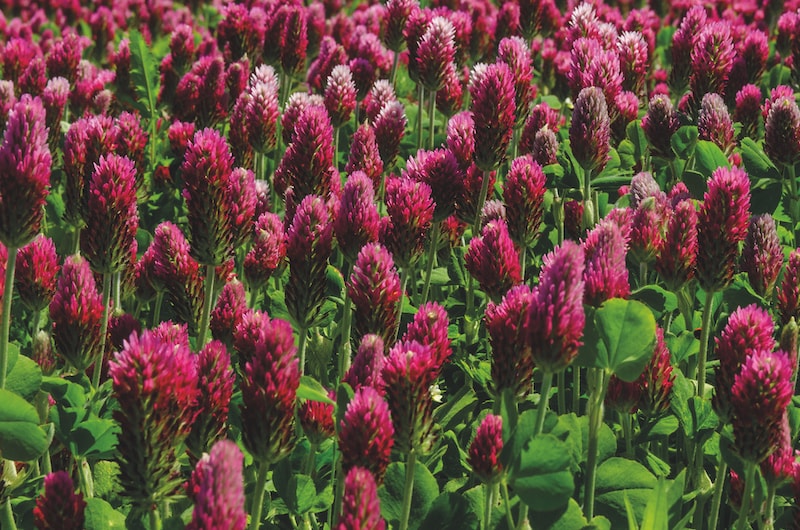
Image: Red clover (Green Manure) from Suttons
The technique you use for building good drainage into your soil varies depending on whether your soil is predominantly of the sandy or clay type.
- Clay Soil – the good news is that clay soil is often well-supplied with nutrients however it tends to be cold (so not suitable for early crops) and also becomes waterlogged in wet weather and cracks in dry weather. To improve clay soil, wait until the surface has started to dry out and then dig deep. Break up the clumps with the back of the fork and apply a dressing of lime. Then dig again.
- Sandy Soil – The soil with the “least backache but the most heartache,” sandy soil is free draining and easy to work, but the downside is that it’s usually short on nutrients. The answer is to add plenty of humus-making material. A “sticky” type like well-rotted cow or pig manure is best. Green manures – a range of seeds sown specifically to improve the condition and/or fertility of the soil – are also a great idea.
- Chalky Soil – liked by a large number of rockery-type plants this soil can be sticky and soft and is too alkaline for many plants. Keep the digging shallow and add fertilisers and compost or well-rotted manure. Green manures are very beneficial to chalky soil.
- Loam – lucky you. This is just about the best soil and will need little attention however will still benefit from some green manure.
Waterlogging is a growing problem for UK gardeners, but working to improve soil quality and structure can go a long way towards addressing the problem. For more ideas to help you keep on top of garden jobs right through the year, including getting the best from your veg patch, flower borders and lawns, head over to our monthly gardening jobs page for a full breakdown of tips to keep your garden in tip top condition.
Lead image: Shutterstock
Last Updated on July 28, 2025 by Suttons Horticultural Team

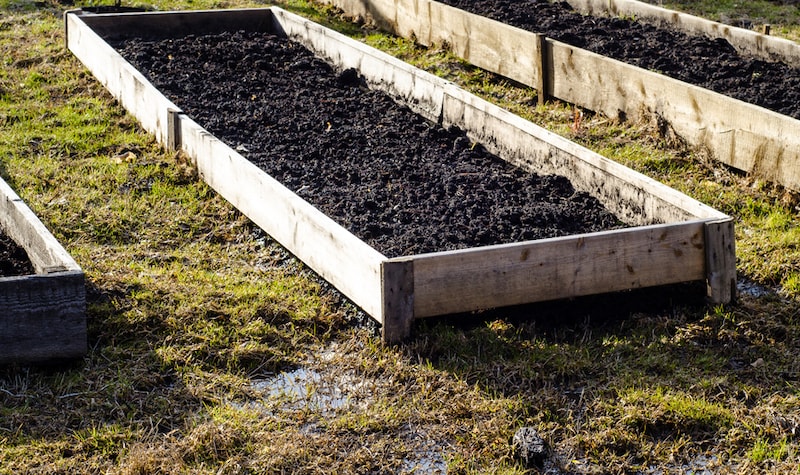



We have must moved into a new house, the garden is a blank canvas currently with a waterlogged muddy lawn, what should we do as a first step? we’re considering rotavating it and starting again, should we add to it? more soil? sand? lime? and then relay a lawn?
We have part of our lawn that is in the shade which is against a wall making the area very wet, we are unable to get any grass to grow having put grass seed there several times. Can you advise us on how to dry this area to enable grass to grow. Thank you